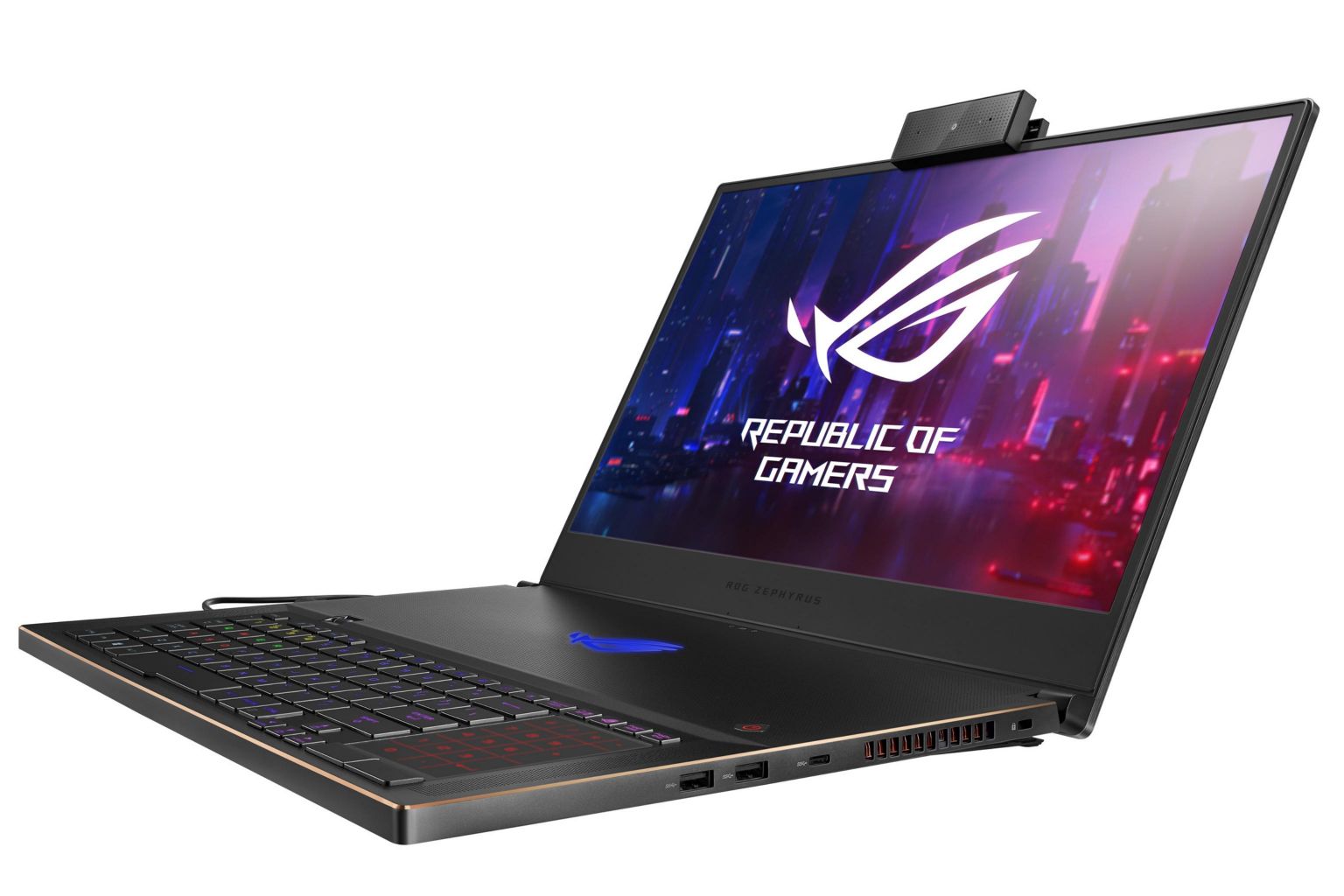Tech review: Asus ROG Zephyrus GX701 is slim and powerful
Sign up now: Get ST's newsletters delivered to your inbox

The Asus ROG Zephyrus GX701 sports a 17.3-inch screen compared to the 15-inch display on the previous GX501 model.
PHOTO: ASUS
Vincent Chang
Follow topic:
Asus has picked its ultra-thin ROG Zephyrus gaming laptop series to showcase Nvidia's flagship GeForce RTX 2080 (Max-Q design) graphics chip.
The new entry in the Zephyrus series, the GX701 sports a 17.3-inch screen compared to the 15-inch display on the previous GX501 model. The older laptop, though, remains a very capable gaming computer as it uses Nvidia's previous-generation flagship GeForce GTX 1080 (Max-Q design).
Besides the larger screen, which contributes to the increased weight (from 2.2kg to 2.7kg), the new GX701 is mostly identical to its predecessor.
Notably, it retains the proprietary cooling system, dubbed Active Aerodynamic System, of the laptop series. It is a unique air intake system whereby a flap at the laptop base opens up to suck in cool air. Asus says the four cooling fans inside the laptop have an anti-dust tunnel to catch dust from the large intake and direct them out of the chassis.
I found this cooling system rather fragile on the previous Zephyrus laptop and the new version did not change my mind. In fact, the thin flap feels even more flimsy, probably because it now extends across a wider 17.3-inch notebook. The panel's middle section sags and flexes under the slightest pressure, which does not inspire confidence.
Like its predecessor, the GX701 has the keyboard right up to the front edge, so there is no support for the wrist. On the other hand, your fingers are further from the warmer parts of the laptop, which can get rather toasty when it is running at full power.
Key travel is decent for a slim gaming laptop (just under 19mm thick), while Asus has also added per-key RGB backlighting to the keyboard, a popular feature that was previously unavailable.
SPECS
Price: $4,998
Processor: Intel Core i7-8750H (2.2GHz)
Graphics: Nvidia GeForce GTX 2080 8GB GDDR6 (Max-Q)
RAM: 24GB DDR4
Screen size: 17.3 inches, 1,920 x 1,080 pixels
Connectivity: USB 3.1 Gen 2 Type-C, USB 3.1 Gen 1 Type-C, USB 3.1 Gen 2 Type-A, 2 x USB 3.1 Gen 1 Type-A, HDMI, audio jack
Battery: 76 watt-hour
RATING
Features: 4/5
Design: 3.5/5
Performance: 5/5
Value for money: 3/5
Battery life: 1/5
Overall: 4/5
The touchpad has been shifted to the right, where the numeric keypad usually resides. However, you can press a key to disable the touchpad, turning it into a virtual numeric keypad.
There are a couple of other minor tweaks. For instance, there is now a scroll wheel to adjust the volume, which is very handy for games and videos.
To enable a narrow bezel above the screen, Asus has removed the usual Web camera, instead bundling a separate USB-powered camera. It has a clip to attach itself to the laptop. I don't mind this as I hardly use the Web camera.
The display has also been upgraded. It now has a higher 144Hz refresh rate compared to the previous model's 120Hz version. The screen resolution is unchanged at 1,920 x 1,080 pixels, which I feel is optimal for a gaming laptop. It still supports Nvidia's G-Sync technology, which can reduce stutter and lag caused by inconsistent frame rates. More importantly, the display looks brighter and more vibrant.
Given that the GX701 comes with a powerful six-core Intel processor, as well as its new graphics chip, I was expecting a significant boost in performance over its predecessor.
It seemed the case in Crysis 3 at Very High setting, where it produced 128 frames per second (fps) on average, compared to 104 fps for the older GX501. But there was no performance gain in Doom, where both laptops scored around 130fps at Ultra setting.
In the system benchmark PCMark 10, the overall score also went up from 5,587 on the GX501 to 6,042 for the GX701.
But the fans did become much louder during these benchmarks, though they were not as noisy as some other gaming laptops. Even while the laptop is idling, the area above the keyboard felt warm, and it tipped into too-hot-to-touch territory when running a game. A monitoring app reported the peak temperature of the graphics chip at 90 degrees Celsius.
Like most gaming laptops, the GX701 has poor battery stamina. It lasted 1hr40min in our video-loop battery test with the screen brightness set to maximum.
Verdict: Not everyone will agree with the design decisions required to achieve its slim build. But it is a very capable gaming laptop, albeit it runs very warm in video games.

